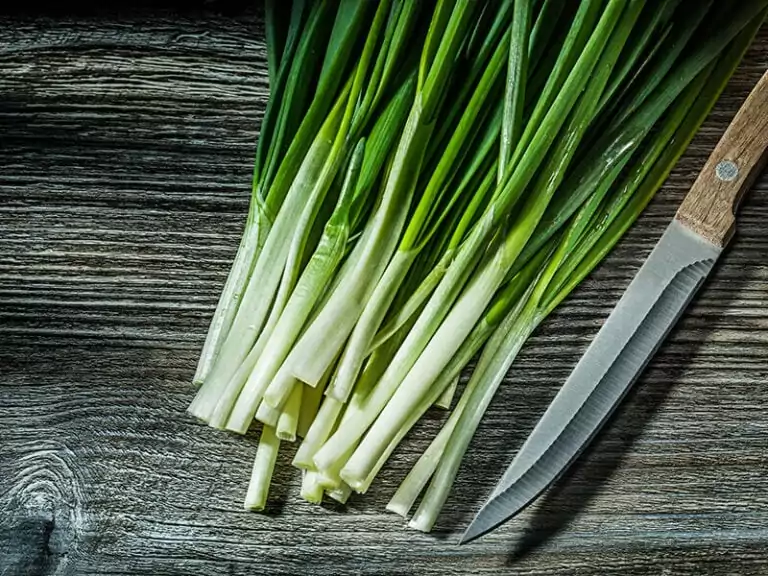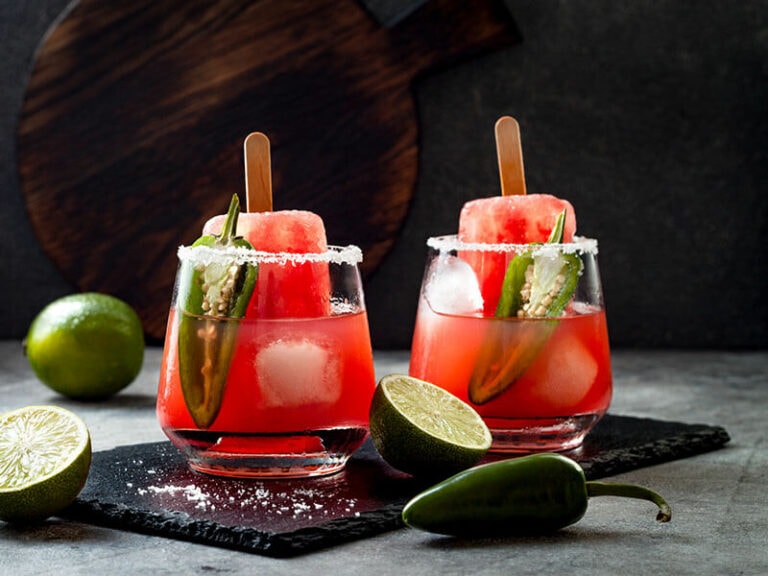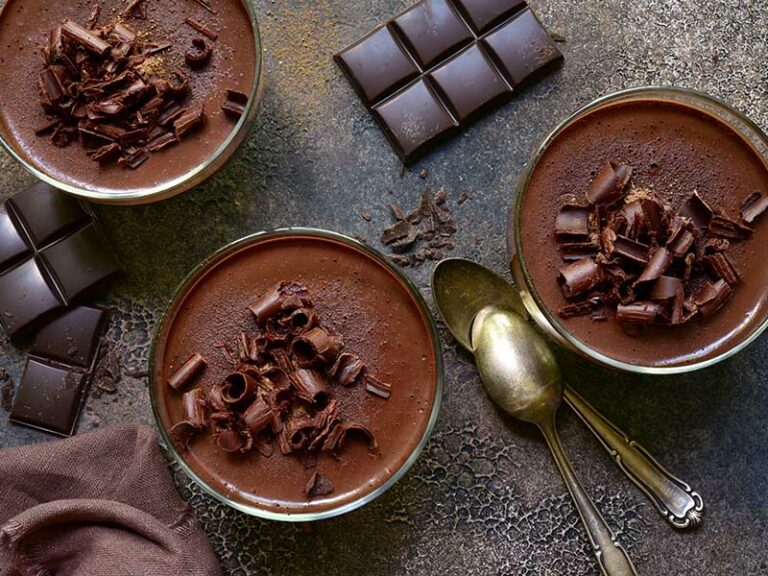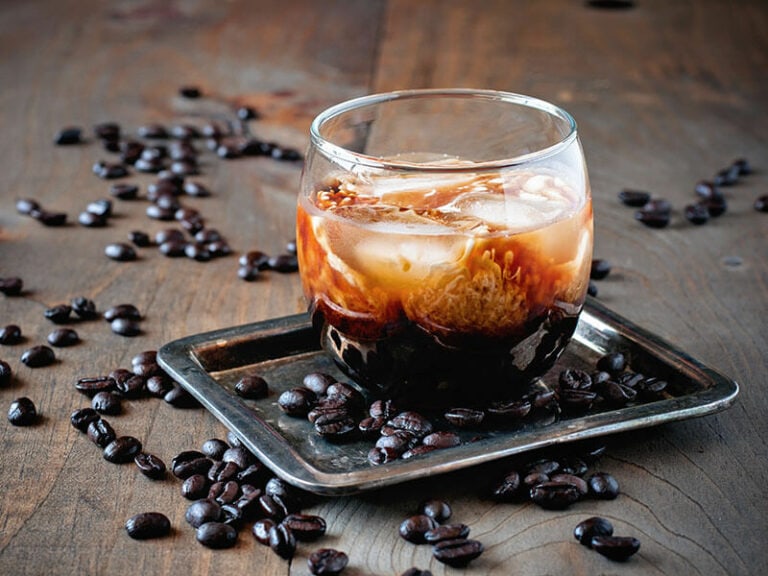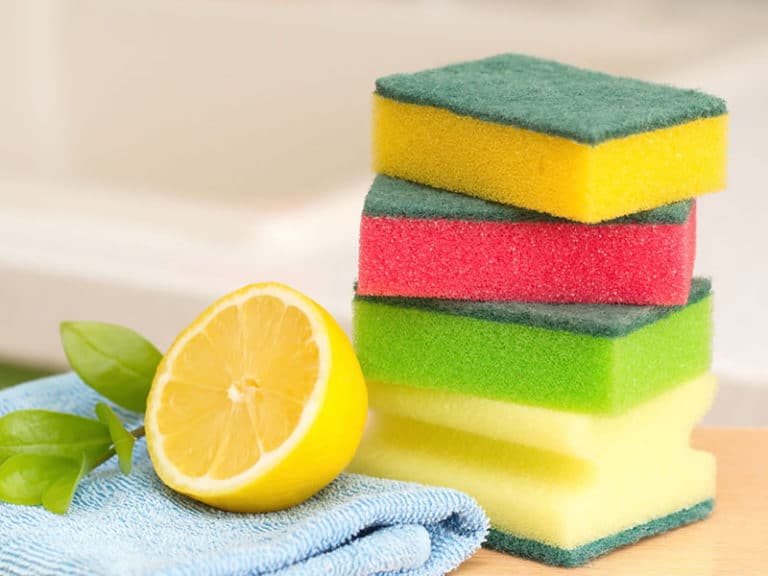What is prepared mustard? Mustard is familiar to the majority of people as it is a staple in many recipes. Most refer to mustard as a spicy and pungent condiment that goes with hot dogs or bacon. In fact, mustard comes in many variants with different flavors.
Prepared mustard is the best-seller kind of mustard out there due to its versatility of flavors and convenience in use. It requires no further complex mixing or seasoning to enjoy with your favorite dish.
But there is more about prepared mustard than you have known before! Let’s dive deep into this topic and get to know more about this one-of-a-kind flavoring.
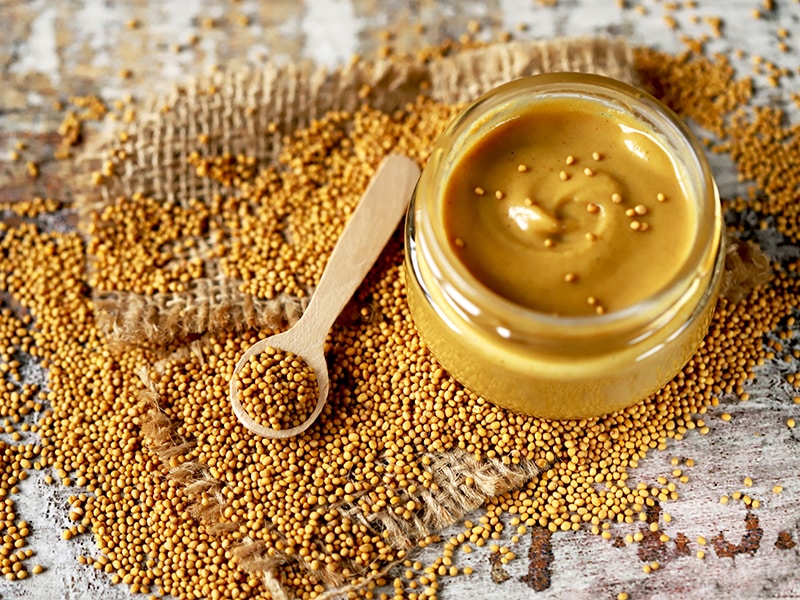
Some Background About Mustard
Just because mustard is iconic in hot dogs doesn’t mean it should be exclusive to hot dogs. In fact, mustard is one of the most loved condiments that can complement the flavors of many dishes, such as pasta, fish, butter, eggs, and seafood.
Mustard History
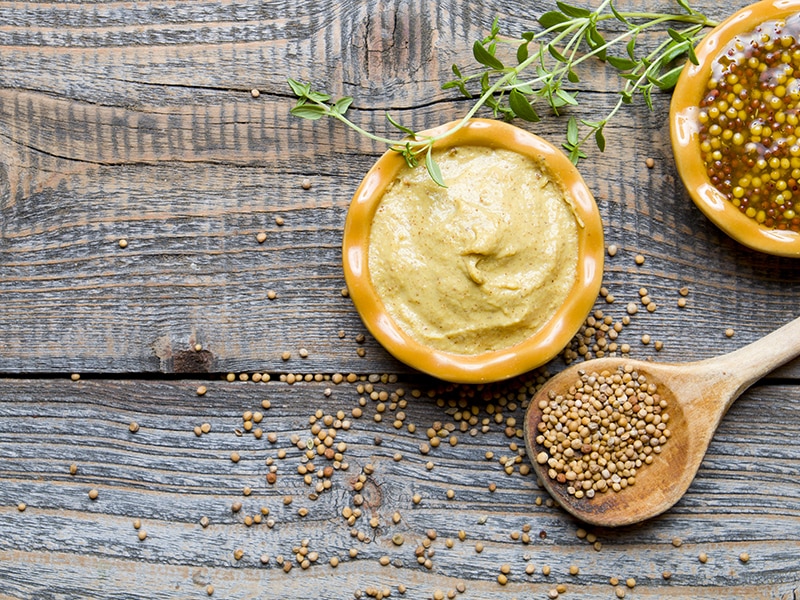
Mustard is not new to the culinary world. People have learned to use it, but how about its origin? Let’s take a quick look at the history of mustard.
The first place the archaeologist found proof of mustard cultivation was in the Indus Valley (Indian Subcontinent). It appeared in a Sanskrit manuscript in 3000 BC. People in Africa and China have found many uses for mustard for thousands of years. (1)
Mustard greens were a staple in ancient China. In the Zhou Dynasty (1036-256 BCE), people invented yellow mustard by crushing the mustard seeds and making a paste out of them. It was a luxury food at that time, and only people in the royal court could taste it
It was the Romans who found the use of mustard as a condiment. The very first mustard condiment was a mixture of grape juice and ground mustard seeds. It was called mustum arderns (burning must), which later deviated to mustard like the name today.
What Is Mustard?
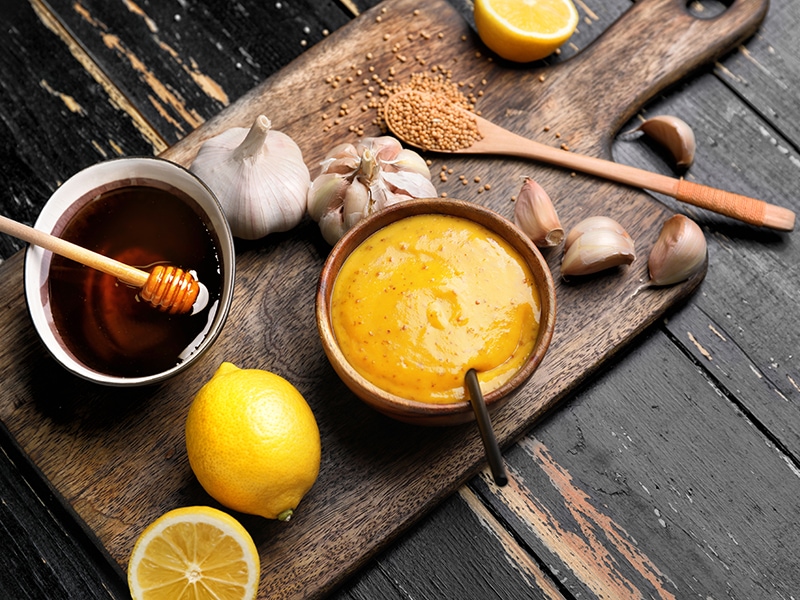
There are many variations of mustard from different cultures, but they all boil down to the mixture of mustard seeds (ground, crushed, or whole), acidic liquid like vinegar or wine, water, and other spices.
Mixing them up will produce a buttery paste with a strong and pungent taste. The variety of mustard ranges from many culinary cultures with their unique type of mustard seeds and flavoring styles.
American mustard comes with a mild flavor and yellow color, while Chinese mustard can burn your tongue and clear your nose from its heat.
Mustard also has many positive effects on health. For example, black mustard seeds have great benefits in fighting lung cancer. (2)
Why Is Mustard Peppery?
The basic mechanism of giving the iconic peppery taste of mustard is the chemical reaction within ground mustard seeds. The longer this process happens, the spicier the mustard will be.
The acidic liquid plays a role in harnessing that process, which means the timing of adding acidic liquid like vinegar dictates the level of spiciness in mustard. The taste of mustard can be sweet or spicy, depending on the use of spices.
The mustard you normally see in hot dogs often has a sour and mild taste without not much of a peppery taste because people added vinegar immediately after crushing the seeds.
Homemade mustard is easier than you think. Watch this video:
An Overview Of Prepared Mustard
Prepared mustard is a popular commercial product of mustard, which needs no further processing to consume. It usually comes in a squeeze bottle or jar for easier use and storage.
There are many types of mustard seeds, and the three most popular types used in prepared mustard are Sinapis alba with white or yellow color, Brassica nigra with black color, and Brassica juncea with brown color. Each type gives mustard a unique color.
Many Types Of Prepared Mustard
Each type of mustard comes with a unique flavor and different heat. Here are some most popular types that are dominating cooking right now.
1. Yellow Mustard
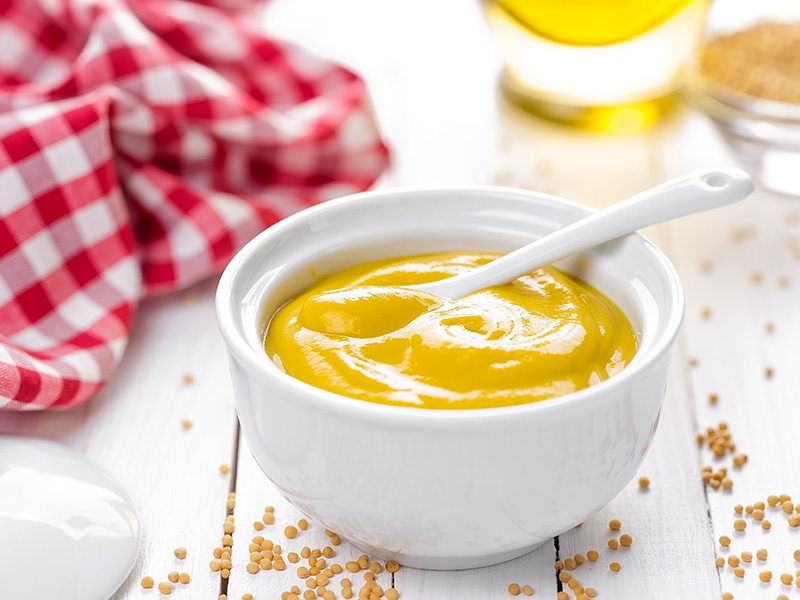
This American classic is made with white mustard seeds mixed with vinegar, water, salt, and turmeric powder, which renders the smooth paste yellow. The vinegar is added early in the process of making to curb the heat of mustard.
Yellow mustard usually goes with hot dogs, hamburgers, sausages, and sandwiches. It has a mild and sour taste from distilled vinegar. It also comes with a smooth texture.
2. Whole Grain Mustard
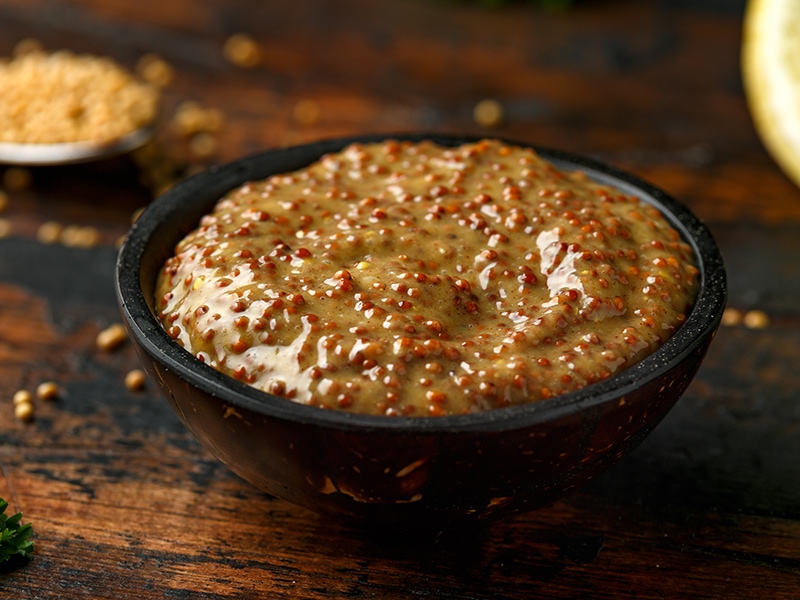
Not all mustard is crushed and ground finely. Whole grain mustard comes with whole or semi-crushed yellow or brown mustard seeds, usually brown mustard. The whole seeds get softened as it absorbs the liquid used in making this mustard, commonly wine and beer.
This type of mustard has a yellowish color and mild taste. It contains beer or wine, honey or sugar, vinegar, and other spices. The whole seeds give a thick and grainy texture to the bite. That’s why it is also called granary mustard.
This mustard pairs well with pretzels, sandwiches, vinaigrettes, and condiments for charcuteries.
3. Dijon Mustard
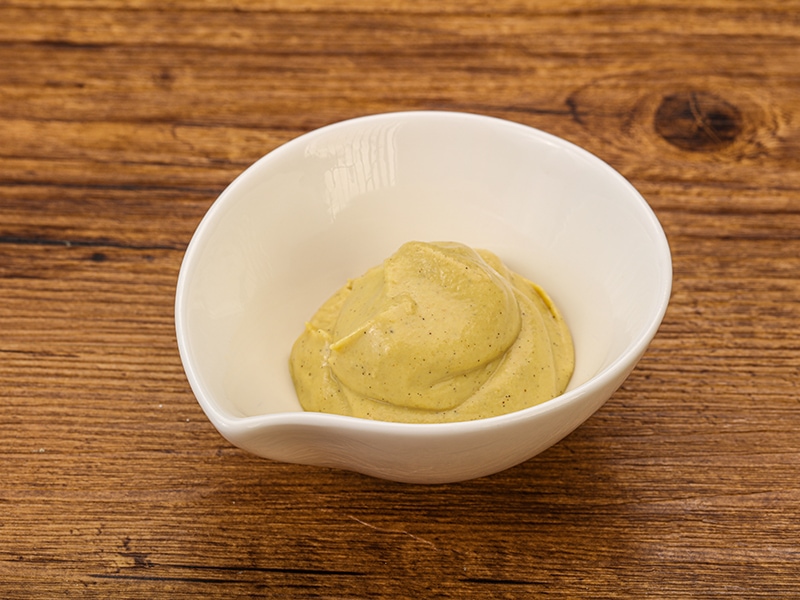
This prepared mustard is made with brown seeds. Dijon is also the name of the French town this mustard is from. This mustard follows a strict rule of production in France, but it’s not the case in the USA.
American Dijon mustard uses white wine, water, and salt in its production, so it’s much milder than the original type with verjus. Verjus is an acidic liquid derived from unripe grapes. This mustard comes in brown or yellowish color with a creamy texture.
Dijon mustard can be a great sandwich spread, a condiment for egg and potato dishes, or salad dressings.
Here is why traditional Dijon mustard is so expensive:
4. Honey Mustard
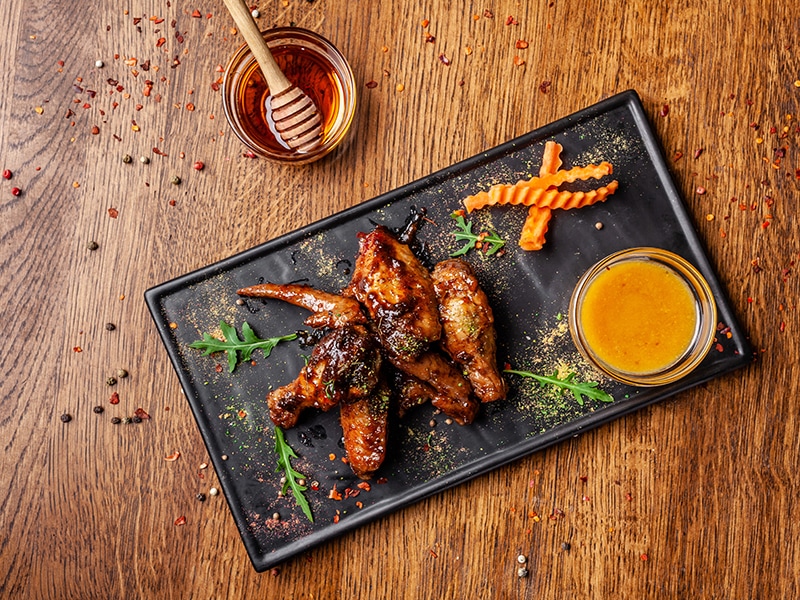
This incredibly sweet and creamy mustard is so popular to pair with fried chicken and chicken nuggets.
Honey, with its natural flavor and health benefits, is an upgraded replacement for sugar in mustard. Also, mayonnaise gives this mustard a savory and creamy texture.
Honey mustard is well-fitted with everyone, even children, since it has a very mild and acidic taste, with a more sweet and tangy taste. The color of honey mustard depends on the mustard seeds used. Honey mustard has a smooth and creamy texture.
Honey mustard is very versatile and can serve as dips, condiments, salad dressings, or marinades.
5. Spicy Brown Mustard
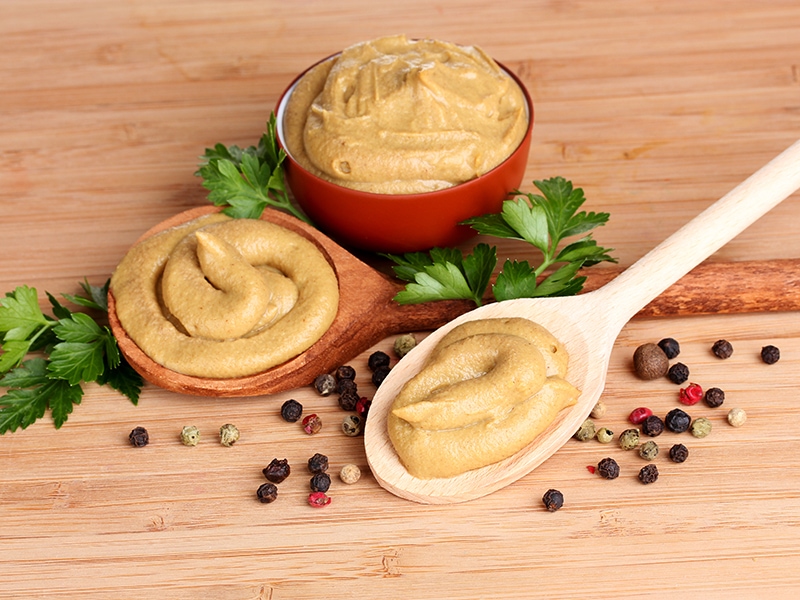
This kind of mustard is made with brown mustard seeds with higher pungency and heat. The coarsely ground seeds are soaked in less vinegar than other mustard, so it’s less acidic. This particular combination pushes the heat up over the roof!
The crushed husk gives this mustard a slightly grainy texture with tiny flecks in the mixture. People also add horseradish for additional heat level and complexity of flavor. Although it is from brown mustard seeds, this mustard variety is generally bright yellow.
Complementary ingredients added to this mustard are vinegar, ginger, cinnamon, and nutmeg. This mustard is great as a sandwich spread, pretzel dip, or condiment for roast beef, hot dogs, and burgers. The fine paste and creamy texture are ideal for these dishes.
6. Hot Mustard
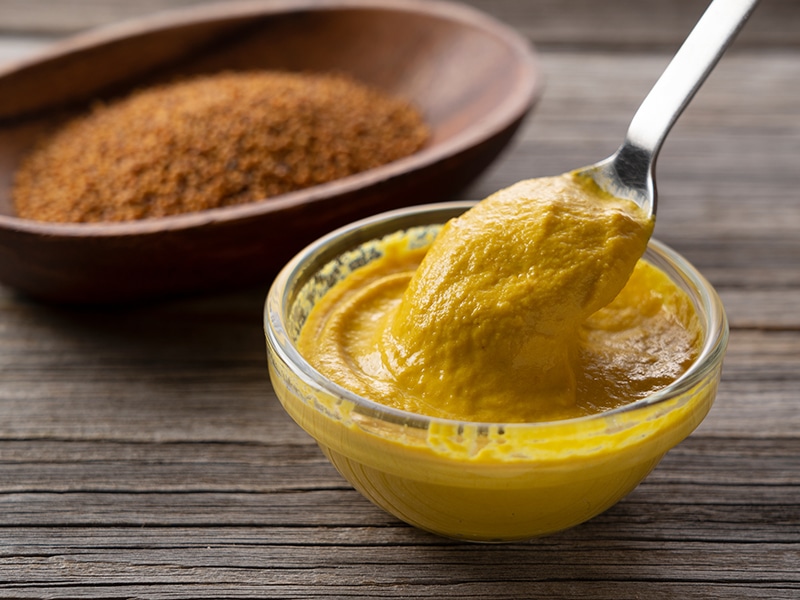
Hot mustard is the rawest type of mustard created to bring out the original pungency of mustard seeds. Once eaten, it will not burn your tongue but will clear your nostrils and generate a strong heat in the mouth.
This mustard contains no acidic liquid to harness its heat and piquancy. It comes in yellow or green color, and you usually see it in Chinese dishes and appetizers. It has a smooth and thick texture.
7. English Mustard
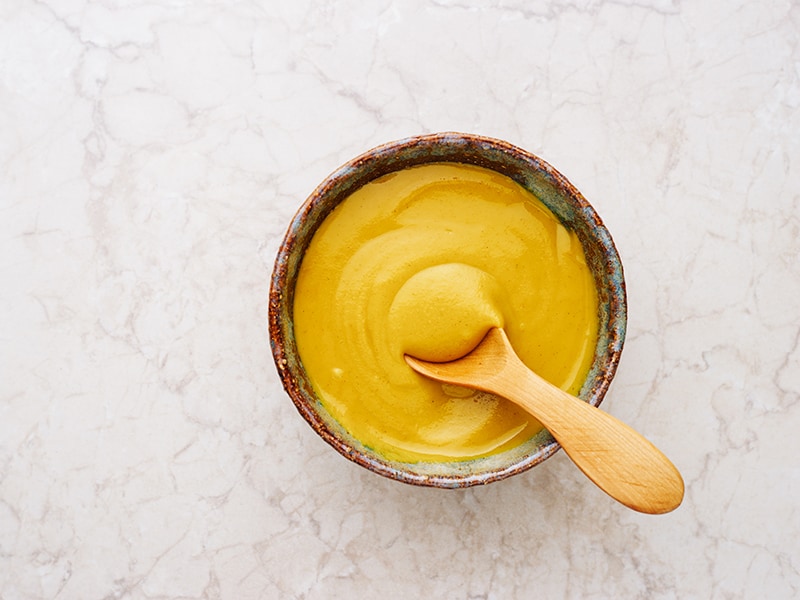
This type of mustard is like American yellow mustard, but it packs a much hotter and more pungent flavor. This is due to the brown variant of mustard seeds and the low acidic content added. It also contains sugar, salt, turmeric, and citric acid.
English mustard comes in a bright yellow color and is suitable to use as a cooking ingredient and a condiment for many meals like fish, salads, chili chicken, or cheese. The thick texture complements these dishes so greatly.
Dry Mustard Vs. Prepared Mustard
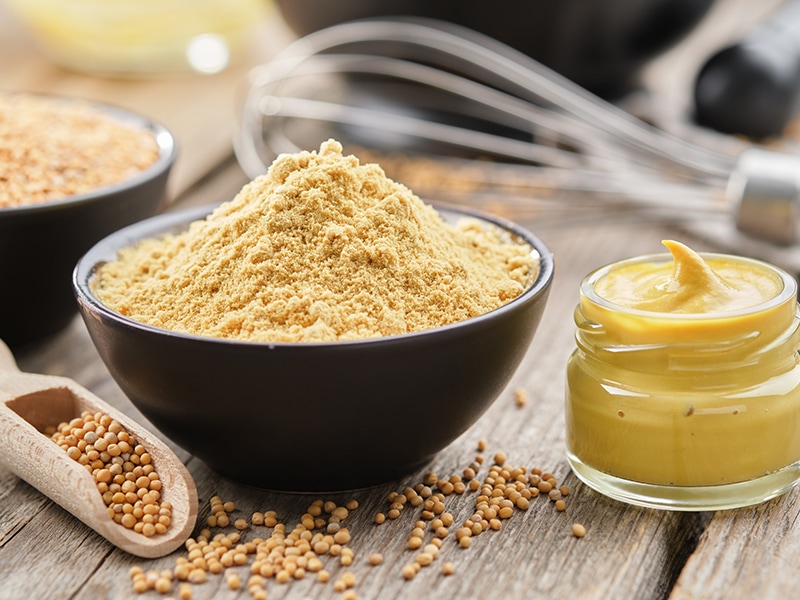
Dried mustard or mustard powder is a kind of flour-like mustard that is from coarsely ground mustard seeds. Both dry and prepared mustard will give your dish a pungent and mustardy flavor, but the effects are not entirely the same.
Dried mustard is the core ingredient in making prepared mustard. It is dried, ground up, and without adding liquid and other ingredients to turn it into a paste.
Dried mustard works in spice rubs and savory dishes, salad dressings, and marinade, while prepared mustard is good on dried foods like sandwiches, pretzels, chicken, and cheese. Prepared mustard’s paste form makes it an ideal dip and condiment too.
Dried mustard has no flavor or taste. It is necessary to let it sit in water for 5 to 10 minutes to release the oil that contains its flavor, whereas prepared mustards come with complex flavors and a wide range of selections.
In some cases, dry mustard can be a great substitute for prepared mustard. The rule of thumb is to use 1 teaspoon of dry mustard for 1 tablespoon of prepared mustard.
You should add some liquid like water and vinegar to the dried mustard. The recommended ratio here is 2 teaspoons of liquid for every teaspoon of dry mustard. Water alone will make your mustard bitter. If you want it hotter, use half water and half vinegar.
Mix it well. You might need some time for the vinegar to complete its chemical reaction. Let the mixture sit on the counter for 30 minutes until you get started with your cooking.
Want to grow your organic mustard at home? Check this tutorial for more details:
Recipes With Prepared Mustard
There are countless recipes you can try with prepared mustard. Here are some recipes that you can make in your free time:
1. Honey-Mustard Brussels Sprouts Salad
Combined with honey mustard, Brussels sprouts salad can finally attain perfection. The dressing amazingly pairs well with grapes, walnuts, and apples. You can add cheese and nuts for an extra fatty taste.
Learn how to make honey-mustard brussels sprouts salad with a few simple steps.
2. Dijon-Crusted Fish
Dijon mustard pairs so nicely with toasted fish because it adds so many flavors and tastes to the dish. With a hint of mustard and horseradish, this crusted fish is truly heaven-sent.
3. Grilled Honey Mustard Chicken Sandwiches
You can replace turkey sandwiches with burger buns because they are full of flavor and nutrients with no unhealthy sugar and sodium like normal sandwiches. You can add ham, avocado, or vegetables to your sandwich too!
4. Spruced-Up Cheese Spread
This delicious cheese spread is irresistible at first glance. The fatty cheese and the strong flavor from the mustard complement each other so well to give you a taste you have never tried before.
5. Pork with Mustard Sauce
This pork with noodles and mustard sauce is the kind you never knew you needed until you got to try it. The juicy meat with rich-flavored mustard sauce is a simply delectable combination in this recipe.
FAQs
It’s such a wonderful and diverse world when it comes to mustard that you feel like you can never have enough of it. There is more useful information for you in these frequently-asked queries.
Integrate Prepared Mustard In Your Cooking
Prepared mustard has more to it than just a peppery taste and heat as many people might think. There are many types of prepared mustard with an amazing and unique taste that you never know how good they are until you use them in your recipes.
Whether as a condiment, sauce, dip, or salad dressing, prepared mustard will never fail to bring a diverse taste to complement your dishes. Try to be creative with your mustard recipes, and you will find the best recipes for yourself.
Before leaving, please let me know your favorite types of prepared mustard in the comment section. Don’t forget to like and share this insightful article with other mustard lovers.
References
- Mustard (condiment) (2022) Wikipedia.
- Ahmed AG; Hussein UK; Ahmed AE; Kim KM; Mahmoud HM; Hammouda O; Jang KY; Bishayee A; (no date) Mustard seed ( brassica nigra) extract exhibits antiproliferative effect against human lung cancer cells through differential regulation of apoptosis, cell cycle, migration, and invasion, Molecules (Basel, Switzerland). U.S. National Library of Medicine.

